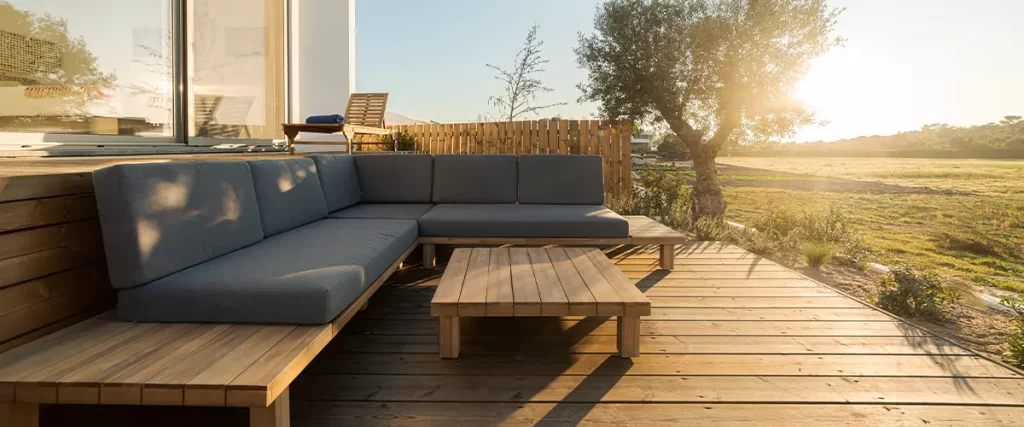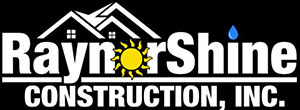When upgrading or doing a deck building, the space beneath it often becomes an afterthought. Yet what you put under your deck can make a big difference in how the area looks, how long your deck lasts, and how well it resists moisture, weeds, and pests. The right under-deck material creates a cleaner, more functional outdoor living space and helps protect your investment.
Let’s look at the most practical, attractive, and cost-effective options to use under your deck and how to decide which one fits your home best.
Why It Matters What You Put Under Your Deck
The area underneath a deck tends to stay shaded and damp. Without the right materials, water can pool, weeds can grow, and wood can rot. That’s why it’s important to plan what will cover the soil before you start your deck project.
Using the right under-deck material can:
- Reduce moisture retention and prevent standing water.
- Stop weed growth and make maintenance easier.
- Prevent erosion and keep soil from shifting.
- Improve visual appeal by creating a clean, finished look.
- Provide a relatively dry storage solution for tools, bikes, or garden supplies.
Whether you have a raised deck, a high deck, or a second-story deck, the area beneath it deserves attention. It can be a simple ground cover, a storage zone, or even an extension of your outdoor living space.

Start with a Solid Foundation
Before deciding what materials to use, make sure the ground beneath your deck is properly graded. A slight slope away from your home prevents water from pooling and helps direct it toward a drainage system.
Remove weeds and debris, then lay a weed barrier or landscape fabric to keep unwanted plant growth under control. This fabric layer beneath your deck acts as a protective base for whatever material you choose next.
Best Materials to Put Under Your Deck
Each material offers different advantages. Some are chosen for their appearance, others for drainage or cost. Here are the most common and effective options:
1. Crushed Stone or Plain Crushed Rock
Crushed stone remains one of the most popular choices for the area underneath a deck. It provides excellent drainage and prevents mud or standing water from forming.
- Promotes adequate drainage and prevents erosion.
- Reduces moisture retention near wood posts and beams.
- Offers a clean, low-maintenance surface.
- Works well under both wooden decks and composite decking.
Choose crushed stone in a neutral color to match the overall deck design.
2. River Rock
River rock is visually appealing and provides similar drainage benefits as crushed stone. Its rounded shape helps water flow freely through the gaps.
- Adds texture and natural color variation.
- Creates a smooth, finished look that complements most outdoor spaces.
- Does not hold moisture like mulch or soil.
- Works especially well beneath a raised deck or elevated deck.
While river rock costs a little more upfront, it rarely needs to be replaced.
3. Pea Gravel
Pea gravel offers a smaller, softer texture than crushed rock or river rock. It’s easy to spread and comfortable to walk on, making it ideal if you use the area underneath as a storage space or walkway.
- Provides a stable surface for foot traffic.
- Helps water drain efficiently.
- Comes in many natural tones for better aesthetic appeal.
- Acts as a pest-resistant solution compared to organic materials.
Adding a landscape fabric layer beneath pea gravel will help prevent weed growth and keep the surface cleaner over time.
4. Coarse Wood Mulch or Fine Wood Chips
Wood mulch gives a softer, natural look under your deck. It can blend beautifully with gardens or tree lines around your outdoor space.
However, it has a few drawbacks. Wood mulch and fine wood chips hold moisture, which can attract insects or even cause moisture damage to wooden decks. If you choose this route, use coarse mulch that dries faster and replace it regularly.
Benefits include:
- Low cost and easy to install.
- Complements wooden decks and outdoor gardens.
- Prevents erosion and reduces weed growth when paired with a fabric layer.
Avoid piling mulch too close to deck posts or supports, as it can retain water and increase the risk of rot.
5. Rubber Mulch
Rubber mulch is a modern alternative that provides the same benefits as wood mulch without attracting insects or holding water. It’s made from recycled tires, making it a long-lasting and non-flammable material.
- Does not retain moisture or attract pests.
- Lasts for many years without fading or breaking down.
- Safer to walk on, ideal for families or pets.
- Available in several colors to match your deck design.
It’s a great option for homeowners who want a low-maintenance, visually appealing surface that requires little upkeep.
6. Decking Sand
Some homeowners prefer to fill the under-deck area with clean sand, especially if the space will be used for children’s play or light storage.
Decking sand absorbs moisture but drains quickly if the ground is properly sloped. It’s an affordable choice for smaller decks, although it can attract neighborhood cats or insects if left uncovered.
Add a fabric layer beneath to keep sand from mixing with soil or washing away.
7. A Deck Drainage System
For decks that sit above living areas or patios, a deck drainage system keeps the space underneath completely dry. These systems channel rainwater away from joists and beams, protecting them from moisture damage.
PVC decking materials and modern drainage systems often pair together for high-performance decks. They turn the under-deck area into usable space perhaps an outdoor kitchen, seating area, or dry storage solution.
While more expensive initially, this approach significantly extends the life of your deck and reduces long-term maintenance costs.
Factors to Consider When Choosing Under-Deck Material
Choosing what to put under your deck depends on how you plan to use the space and what kind of deck materials you have. Here are some factors that can guide your decision:
- Moisture protection: If your area has heavy rainfall or soil that tends to retain water, focus on materials like crushed stone, river rock, or a proper drainage system.
- Aesthetic appeal: River rock or rubber mulch can give the area beneath your deck a clean, polished look.
- Cost and lifetime value: Plain crushed rock and pea gravel are cost-effective materials that perform well over time with minimal upkeep.
- Fire safety: If your home is in a dry climate, avoid wood mulch and instead use non-flammable materials like gravel or stone.
- Use of the space: A higher or second-story deck may benefit from a complete deck drainage system, while a ground-level deck might only need crushed stone and landscape fabric.
Creating a Functional and Beautiful Under-Deck Area
Once the base material is set, you can make the space more inviting. Some homeowners add potted plants, decorative lights, or even small storage units to make use of the area.
If you install a drainage system, consider adding flooring tiles or composite decking beneath to extend your outdoor living space. Composite decking and PVC decking materials are durable and moisture-resistant, offering the same benefits as a full deck surface without constant maintenance.
Maintaining proper drainage and airflow remains key. Avoid sealing the space entirely, as trapped moisture can shorten the life of your deck materials.
How to Maintain the Space Beneath Your Deck
Even low-maintenance under-deck materials need periodic care. Sweep debris away from crushed stone or gravel once or twice a year. If you use mulch, replace it when it starts to break down.
Inspect the ground for signs of standing water after heavy rain. If puddles form, consider adding a French drain or additional crushed stone to improve water flow. Keeping the area clean and dry reduces pest activity and extends the life of your wooden or composite decking.
The Best Material for Most Homes
For most homeowners, crushed stone or river rock strikes the best balance between cost, durability, and drainage performance. They both handle moisture well, look neat, and require little maintenance.
If you want a soft, natural appearance, rubber mulch offers excellent color variety and long-term value. For those aiming to turn the under-deck area into a functional living or storage space, a deck drainage system with composite decking may be the ideal material combination.
The right choice depends on your soil type, climate, and how you plan to use the space.

Final Thoughts
Planning what to put under your deck means thinking about long-term protection, usability, and keeping your outdoor space comfortable year-round. A well-chosen under-deck material prevents erosion, limits weed growth, and helps your deck last longer with less maintenance.
Still, installing the right drainage system or preparing the soil can be a challenge, especially for elevated decks or second-story decks. If you’d rather not handle it all yourself, our deck building team can help.
Raynor Shine Construction is a deck contractor that specializes in designing and building durable, beautiful decks that last. We handle everything from deck materials to under-deck drainage to make sure your new deck stands strong for years.
If you’d like expert help with your deck project, call us at (910) 985-8064 or Contact us
